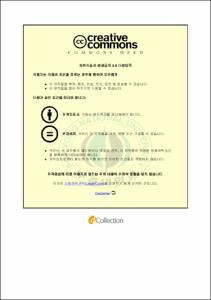스마트폰 어플리케이션 UI가 브랜드 이미지 및 제품 구매 의도에 미치는 영향에 관한 연구
- Alternative Title
- A study on the influence of UI of smart phones on barnd image and consumer purchasing habit.
- Abstract
- Abstract
Every human being pursues a more convenient life and wants to lead a more convenient life. People have made and used a variety of tools to achieve those goals and supplemented and developed the lacking aspects.
In modern society, information technology has shown the most significant growth of all technologies. Smart phones are at the center of innovation that evolves day after day.
This study set out to understand the four elements of smart phone application UI (User Interface), namely informativeness, design, convenience, and navigation, and examine what kind of impact they would have on brand image.
The study also aimed to investigate correlations between brand image and purchasing intention. Unlike the previous studies that focused on examining the UI characteristics and compensating for the problems, the study tried to figure out which elements would have the biggest impact on brand image. The purposes of the study were to identify the aspects that companies should focus on further to improve their brand images when making an application and help them improve and supplement them in the flood of applications.
Based on the previous studies on connections between the UI elements and brand image, the investigator formed a set of hypotheses and took a survey with clients at stores whose companies were using a smart phone application by personally visiting them in order to test the hypotheses empirically.
The research findings were as follows:
First, when they are offered quality information they want, clients have an improved brand image.
Second, clients have an improved brand image when they use an application that was designed to look good visually and be easy to use.
Finally, the better brand image is, the more purchasing intention consumers will have.
Good informativeness and superior design are more important elements than good convenience and navigation.
The limitations of the study and future tasks are as follows:
First, it is difficult to represent all cases with certain companies to which the sample is limited.
Second, the study limited the application UI elements to four, thus failing to cover more diverse elements.
Finally, the study only examined smart phone applications and thus raises a need to investigate more diverse platforms including web-based websites.
- Issued Date
- 2013
- Awarded Date
- 2013. 2
- Type
- Dissertation
- Publisher
- 부경대학교
- Alternative Author(s)
- Yoo, Youngmin
- Affiliation
- 부경대학교 대학원
- Department
- 경영대학원 경영학과경영학전공
- Advisor
- 김완민
- Table Of Contents
- < 목 차 >
제1장 서론 1
제1절 연구의 필요성 및 목적 1
제2절 연구의 내용과 연구 방법 2
제2장 이론적 배경 4
제1절 스마트폰의 이해 4
1. 스마트폰의 정의 및 특징 4
2. 스마트폰 국내시장 보급 현황 및 전망 5
3. 어플리케이션(Application)의 정의 8
제2절 UI(User Interface) 이해 9
1. 인터페이스의 정의 9
2. UI의 개념 및 목표 9
3. GUI 디자인 11
4. 인터페이스의 구성 요소 12
제3절 브랜드 이미지에 대한 고찰 16
1. 브랜드 이미지의 개념 16
2. 브랜드 이미지의 중요성 18
3. 브랜드 이미지의 형성과정 20
제3장 연구모형 및 가설 설정 24
제1절 연구모형 24
제2절 연구가설 25
제4장 실증분석과 가설 검증 29
제1절 조사의 설계 29
1. 조사의 목적 29
2. 조사 대상의 선정 29
3. 조사기간과 조사 방법 30
4. 설문지 구성 31
5. 변수의 조작적 정의 31
제2절 가설 검증 32
1. 응답자의 인구 통계학적 특성 32
2. 변수의 요인분석 및 신뢰도 분석 36
3. 변수의 상관관계 분석 39
제3절 가설검증 결과 40
1. 독립변수가 브랜드 이미지에 미치는 영향 40
2. 매개변수가 제품 구매 의도에 미치는 영향 41
3. 연구가설의 검증 결과의 요약 42
제5장 결론 및 제언 43
제1절 연구결과 요약 및 시사점 43
1. 연구 결과의 요약 43
2. 연구 결과의 시사점 44
제2절 연구의 한계점 및 제언 45
참고문헌 47
설문지 50
- Degree
- Master
- Appears in Collections:
- 경영대학원 > 경영학과-경영학전공
- Files in This Item:
-
-
Download
 스마트폰 어플리케이션 UI가 브랜드 이미지 및 제품 구매 의도에 미치는 영향에 관한 연구.pdf
기타 데이터 / 1.06 MB / Adobe PDF
스마트폰 어플리케이션 UI가 브랜드 이미지 및 제품 구매 의도에 미치는 영향에 관한 연구.pdf
기타 데이터 / 1.06 MB / Adobe PDF
-
Items in Repository are protected by copyright, with all rights reserved, unless otherwise indicated.